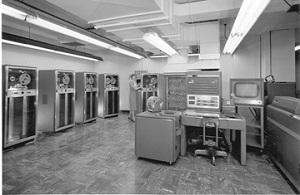Mainframe computers may have gotten us to the moon, but yesterday’s achievements only shine for so long. In a blog post sure to cause wistful feelings among both space nerds and big iron aficionados, NASA CIO Linda Cureton announced that the space agency is powering down its last remaining mainframe, a two-ton, 56 square-foot IBM Z9 behemoth. Her explanation:
For my millennial readers, I suppose that I should define what a mainframe is. Well, that’s easier said than done, but here goes: It’s a big computer that is known for being reliable, highly available, secure, and powerful. They are best suited for applications that are more transaction oriented and require a lot of input/output—that is, writing or reading from data storage devices. They’re really not so bad honestly, and they have their place. Things like virtual machines, hypervisors, thin clients, and swapping are all old hat to the mainframe generation though they are new to the current generation of cyber youths.
You can really hear the nostalgia in her post:
In my first stint at NASA, I was at NASA’s Goddard Space Flight Center as a mainframe systems programmer when it was still cool. That IBM 360-95 was used to solve complex computational problems for space flight. Back then, I comfortably navigated the world of IBM 360 Assembler language and still remember the much-coveted “green card” that had all the pearls of information about machine code. Back then, real systems programmers did hexadecimal arithmetic—today, “there’s an app for it!”
And now new questions: what kind of computers will be used to, say, design and build a lunar colony for 13,000 residents?


